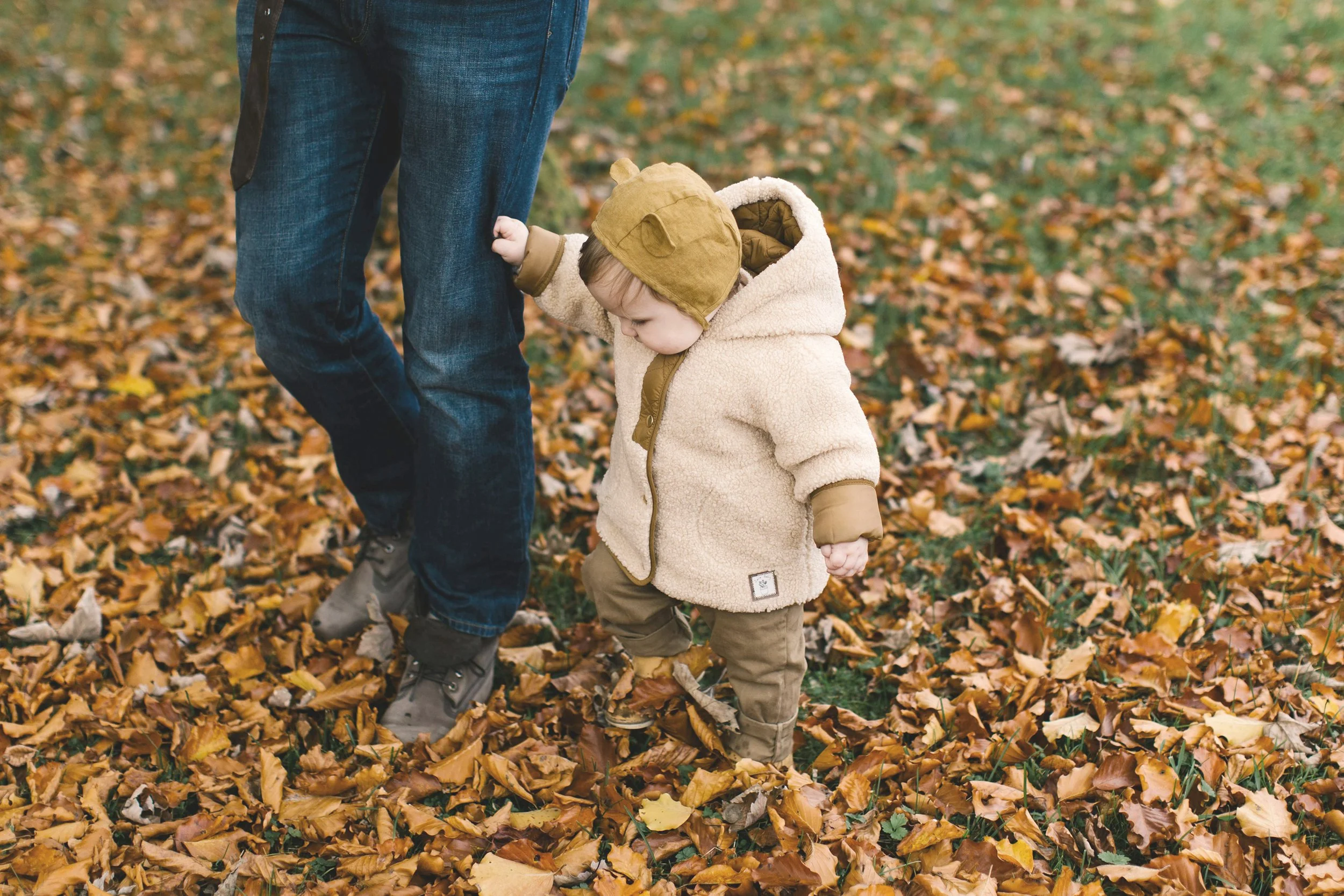The Science of Autumn Play: Why Seasonal Change Matters for Young Minds
Autumn is often described as a season of endings; leaves falling, days shortening, and the land slowing down after summer’s abundance. For children though, autumn is far from a time of loss. It is a season brimming with sensory treasures, shifting rhythms, and meaningful rituals that enrich their development in profound ways.
More than a backdrop to their days, autumn provides a living classroom, rich with colour, texture and change. At Mouse’s Garden, we see every muddy puddle, every crisp leaf, and every chilly morning as a gift for growing minds – and increasingly, science agrees.
Autumn awakens the senses
The crunch of leaves underfoot, the smell of damp earth, the vivid colours of berries and fungi; autumn is a season of sensory richness.
Research in developmental neuroscience shows that multisensory experiences stimulate stronger neural connections in young children’s brains. Touching, smelling, and listening to the textures and sounds of autumn supports language development, memory, and emotional awareness.
When children scoop up piles of leaves, or trace patterns on frosted grass, they are not just playing – they are fine-tuning motor skills, strengthening sensory pathways, and building the foundations for literacy and problem-solving.
Light, rhythms, and rest
Parents often worry about darker evenings making children restless or irritable. The good news? A simple daily dose of outdoor play in natural light can make all the difference.
As daylight shortens, children become more sensitive to shifts in light. Exposure to natural light during autumn days plays a crucial role in regulating circadian rhythms – the body’s internal clock that governs sleep, mood, and concentration.
Studies show that children who spend more time outdoors during autumn and winter have better sleep quality and more stable daily routines. At Mouse’s Garden, we see firsthand how outdoor play, even in the worst weather, helps children settle more easily at rest time and feel calmer and more focused.
Learning resilience through change
Autumn teaches children about change – and resilience. The shift from warm summer days to colder, wetter weather asks children to adapt: to layer up, to embrace mud, to welcome challenge.
Psychologists have found that children who experience “manageable risk and change” in play develop stronger coping skills and emotional flexibility.
When a child learns that rain is not a barrier but an invitation to puddle-jump, they carry forward a powerful message: the world is not to be feared but explored.
At our outdoor nursery, autumn becomes a natural classroom in resilience. Children discover that discomfort is temporary, that joy can be found in mud-soaked boots, and that even the darkest seasons have light.
Rituals of belonging
From harvest feasts to gathering conkers, autumn is full of rituals that root children in community and time. Anthropologists note that seasonal traditions create a sense of continuity and belonging, giving children a framework to understand cycles of life.
Here at our Oxfordshire-based nursery, autumn means apple pressing, hedgerow foraging, and bonfire nights – each a chance for children to feel connected not only to their families but also to the land itself. These experiences are more than fun activities; they are cultural anchors that help children develop identity, empathy, and gratitude.
Nurture autumn play at home
Parents sometimes ask us: “How can we carry these lessons into our daily life?” The good news is, you don’t need a farm or woodland to bring the gifts of autumn into your home. Here are a few simple ideas backed by developmental science:
Leaf baskets: Collect leaves of different shapes and colours, then let your child sort, compare, and tell stories about them. Sorting strengthens categorisation skills, a foundation for maths and language.
Outdoor light breaks: A 20-minute walk helps reset the circadian rhythm and improves evening sleep.
Nature crafts: Pinecones, conkers, and acorns make perfect tools for pattern-making. Crafting with natural objects encourages creativity while grounding children in seasonal rhythms.
Storytelling around the season: Read or invent stories about animals preparing for their winter rest. This not only supports imagination but also builds empathy as children learn about other living beings adapting to change.
Each small act helps children tune into the cycles of the natural world, reminding them that they are part of something bigger.
Endings and beginnings
At Mouse’s Garden, we believe that living by nature’s rhythms is one of the greatest gifts we can give our children. The changing seasons offer a masterclass in resilience, creativity, and belonging.
Autumn teaches us that change is natural, that endings are also beginnings, and that beauty can be found in transition.
And the science is clear: these autumn adventures aren’t just play. They are the building blocks of stronger, happier, healthier minds. So next time you crunch through fallen leaves with your child, remember: you are walking together through one of nature’s most powerful classrooms.

